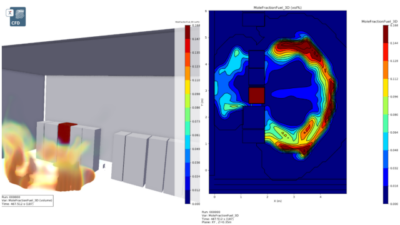Reed Construction Data's chief economist analyzes how the stimulus plan has benefitted the construction market through the first three quarters of 2009.
Jim Haughey, chief economist for Reed Construction Data, provides his analysis below of the stimulus plan’s effect on the 2009 construction market. The American Recovery and Reinvestment Act has provided a much needed boost to the 2009 construction spending market. However, the impact of the stimulus plan has been less than its sponsors claimed initially, but the impact is still greater than the plan’s critics give it credit for.
Reported assessments of the stimulus plan have been muddied by three measurement problems:
1. Use of the wrong measuring stick
2. Difficulty separating the stimulus plan from other President Obama spending initiatives
3. Failure to recognize that only about 1/3 of the stimulus plan is quick, recession fighting, fiscal pump priming.
Stimulus expenditures were about $160 billion by the end of August, but the federal check register is not the proper measuring stick. Washington takes one to two months to reimburse after contractors and other stimulus recipients incur expenses on stimulus project work. The proper measuring stick is a dynamic measurement of how much money was spent in the economy that would not have been spent if the stimulus plan had not been passed.
Adjusting for this type of measurement, the stimulus plan boosted GDP growth by about 3% in both the spring and summer quarters. This boost consists of a small amount spent on previously ready highway and water projects, and a much larger amount spent on tax cuts; about $100 million written to households and funds committed to state governments as general fund budget assistance. States used this pledge to cancel layoffs of many tens of thousands of public employees, even though they get a federal check each month for only 1/12 of the annual commitment.
Using the same measuring stick, the impact of the stimulus plan on the economy will quickly begin to diminish beginning this fall. The impact on GDP is measured as the change in spending from the previous quarter. Even though accumulated-stimulus-driven spending will continue to expand, the quarter-to-quarter change will be shrinking after the initial burst of spending at mid-year.
The timing for construction is different. Many smaller shovel-ready projects have already been completed or are in the wrap-up phase when jobsite spending is much reduced. But larger and delayed shovel ready projects will continue into the fall, many adding to the jobsite workforce after preliminary work is completed. This spending will be supplemented by the beginning of work on buildings included in the stimulus plan. Building funds are about three times more than shovel ready highway and water projects.
The impact of the stimulus on heavy construction will be ebbing beginning either in the fall or winter. The stimulus funds, as expected, were more than enough to offset the loss of other heavy funding in 2009 due to the collapse of the Highway Trust Fund financing system and cutbacks in state and local appropriations and bonding. The stimulus impact on the building market is just beginning and will be substantial in 2010. The impact (change from the previous period) could be as large in 2011 depending on how quickly building, mass transit, and environmental construction funding is allocated to specific projects as well as how quickly pre-construction planning is done. A large share of these stimulus funds are yet to be allocated to specific projects through competitive grant application processes. In many cases the allocation rules have not yet been announced. The stimulus impact on the building market will still be substantial in 2012 and then will taper off quickly over the next few years.
The term "stimulus" is misapplied to about 2/3’s of the $750 billion. Although the money will be spent too late to stimulate the end of the recession, spending is spending so construction will continue to get a boost long after the major boost to the overall economy is past.
Assessing the stimulus plan is also made difficult because other federal spending efforts, without the stimulus label, are underway at the same time. This includes as much as $1 trillion poured into the housing market to delay or prevent foreclosures by forgiving a share of contracted monthly home mortgage payments and subsidizing the federal home financing agencies to issue "subprime mortgages" to deserving households. This is having a bigger and quicker impact on the economy than the legislation labeled "stimulus plan."
It is also difficult to separate the impact of the formal stimulus plan with the credit easing efforts of the Treasury Department and the Federal Reserve Board which made several trillion dollars of additional credit available. This massive injection of liquidity prevented a deeper and longer recession which contributed to restraining the decline in construction spending.



